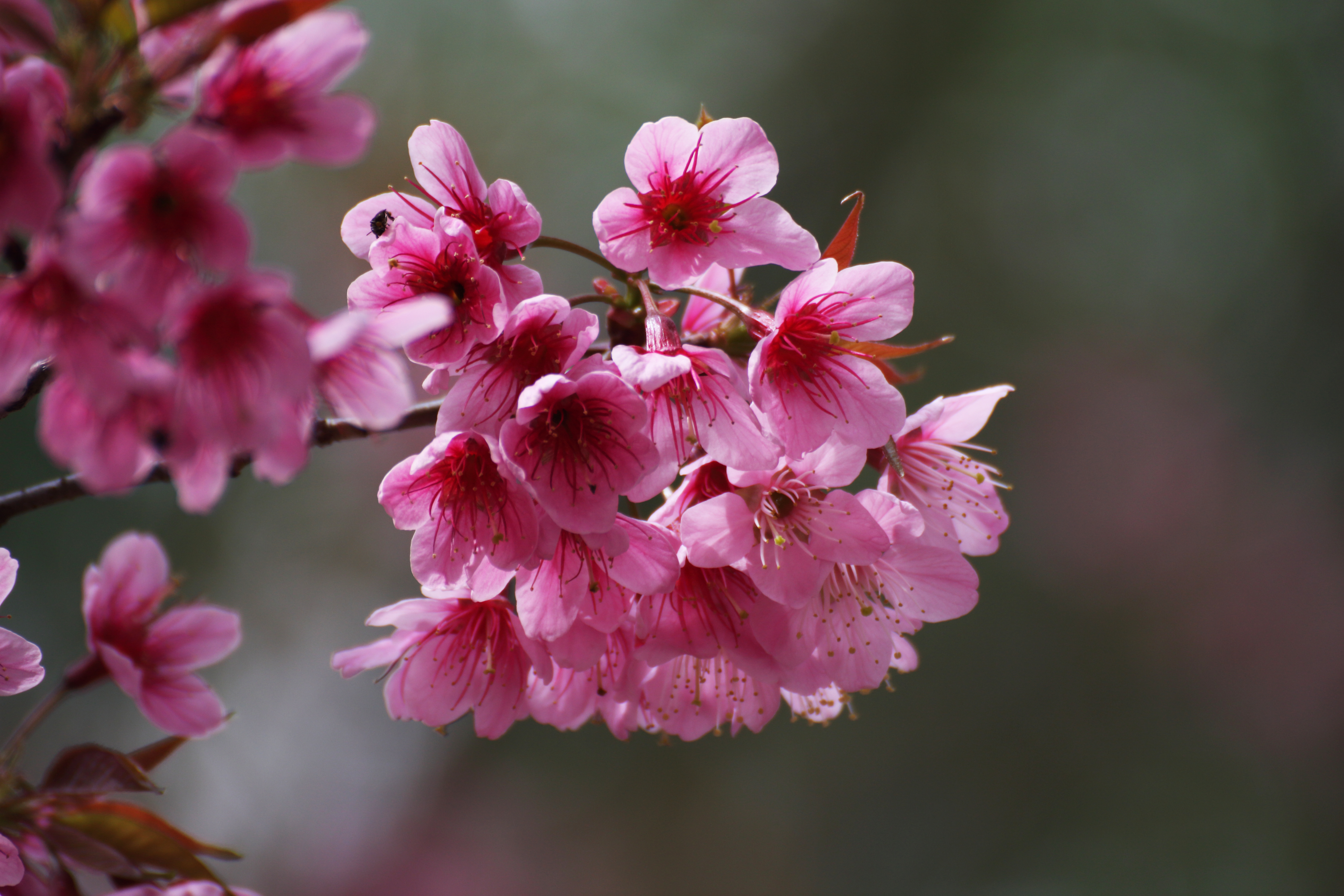Wild Himalayan cherry
(Prunus cerasoides)

Description
Prunus cerasoides, called the wild Himalayan cherry and sour cherry, is a deciduous cherry tree found in East Asia, South Asia and Southeast Asia. It is of the family Rosaceae and the genus Prunus. Its range extends in the Himalayas from Himachal Pradesh in north-central India, to Southwest China, Burma and Thailand. It grows in temperate forest from 1,200–2,400 metres (3,900–7,900 ft) in elevation. Prunus cerasoides is a tree which grows up to 30 metres (98 ft) in height. It has glossy, ringed bark. When the tree is not in flower, it is characterised by glossy, ringed bark and long, dentate stipules. The tree flowers in autumn and winter. Flowers are hermaphroditic and are pinkish white in color. It has ovoid yellow fruit that turns red as it ripens. Prunus cerasoides is cultivated as an ornamental tree. The tree thrives in well-drained and moisture-retentive loamy soil, in an open, sunny, and sheltered location. P. cerasoides, like most members of the genus Prunus, is shallow rooted and is likely to produce suckers if the root is damaged. It is likely to become chlorotic if too much lime is present. It is known to be susceptible to honey fungus. The seed requires two to three months cold stratification and is best sown in a cold frame as early in winter as possible. The seed grows rather slowly and can sometimes take about 18 months to germinate depending on the conditions. The fruits and the leaves give a dark green dye. Seeds can be used in the manufacture of necklaces. The wood is hard, strong, durable and aromatic, and branches are used as walking sticks. Prunus is a genus of trees and shrubs, which includes (among many others) the fruits plums, cherries, peaches, nectarines, apricots, and almonds. Native to the northern temperate regions, 430 different species are classified under Prunus. Many members of the genus are widely cultivated for their fruit and for decorative purposes. Prunus fruit are drupes, or stone fruits. The fleshy mesocarp surrounding the endocarp is edible while the endocarp itself forms a hard, inedible shell called the pyrena ("stone" or "pit"). This shell encloses the seed (or "kernel") which is edible in many species (such as almonds) but poisonous in others (such as apricots). Most Prunus fruit are commonly used in processing, such as jam production, canning, drying, and seeds for roasting.
Taxonomic tree:







